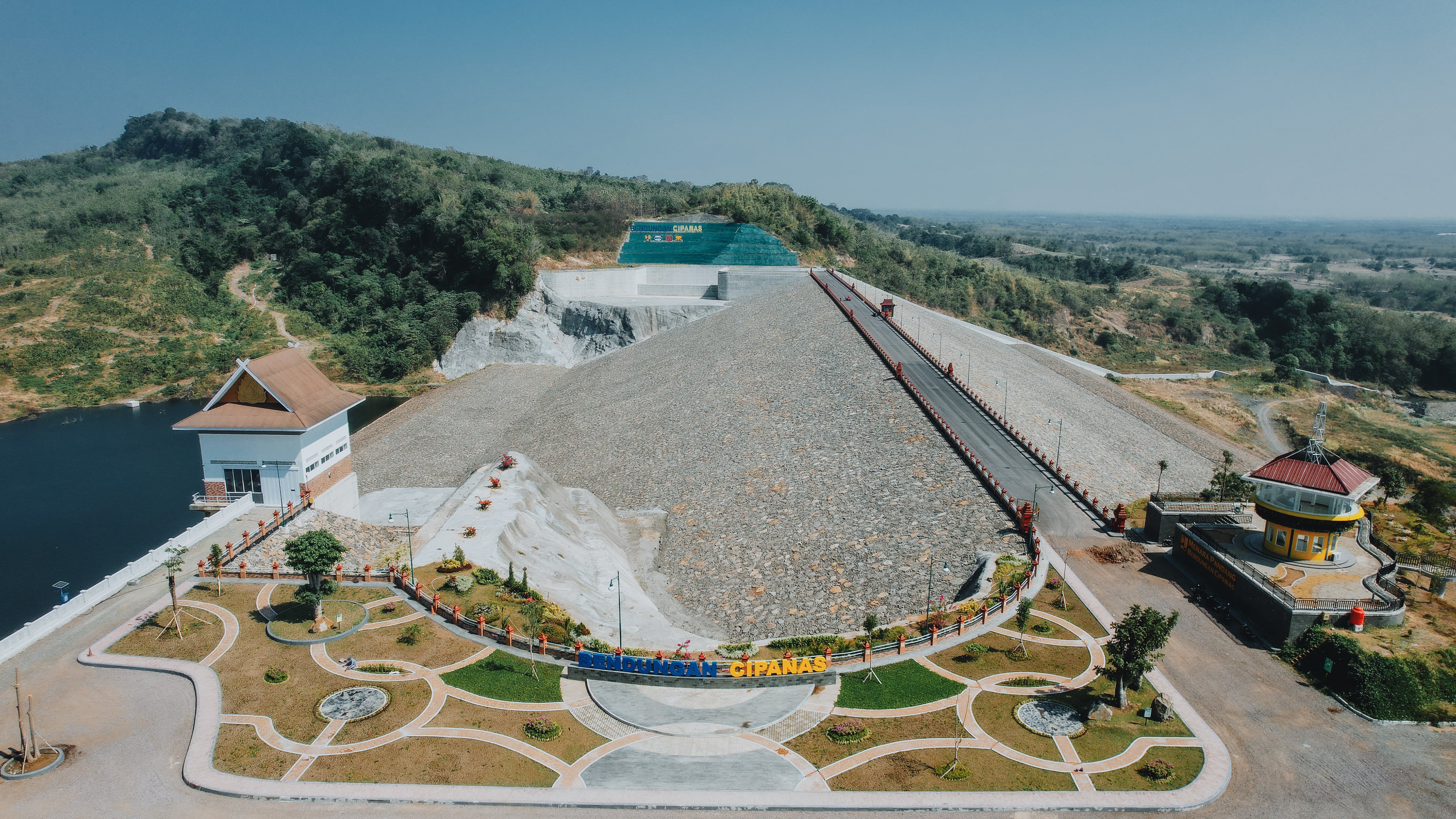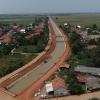Brantas Abipraya Builds Cipanas Dam To Supports Irrigation Supply
 Jakarta, December 29 2023 - PT Brantas Abipraya (Persero), known as a State-Owned Enterprise (BUMN), which operates in the construction sector, continues to build water infrastructure in Indonesia. One of them is by contributing to the construction of the Cipanas Dam. Located in Sumedang Regency and Indramayu Regency, the dam, which is a National Strategic Project (PSN), is ready to be inaugurated by President Joko Widodo.
Jakarta, December 29 2023 - PT Brantas Abipraya (Persero), known as a State-Owned Enterprise (BUMN), which operates in the construction sector, continues to build water infrastructure in Indonesia. One of them is by contributing to the construction of the Cipanas Dam. Located in Sumedang Regency and Indramayu Regency, the dam, which is a National Strategic Project (PSN), is ready to be inaugurated by President Joko Widodo.
"In the construction of the Cipanas Dam, Brantas Abipraya synergized with other BUMN Karya. "In this package we are building infrastructure for dam supporting facilities," said Muhammad Toha Fauzi, Director of Operations I Brantas Abipraya.
The scope of Brantas Abipraya's work on the construction of the Cipanas Dam includes entrance road work, saddle dam work, spillway building work, intake building work, hydromechanical work, facility building work, pier work and viewing towers.
For information, this dam with a capacity of 250.81 million cubic meters has many benefits. Among them are that it can reduce flooding by 487.75 cubic meters per second, has the potential to become a 3 megawatt power plant and supplies raw water of 850 liters per second for the Cirebon-Patimban-Kertajati area. The raw water supply produced by the Cipanas Dam is divided into two areas, namely 650 liters per second for Sumedang Regency and 200 liters per second for Indramayu Regency.
Not only that, this multifunctional dam also has the benefit of supplying agricultural irrigation water in Sumedang and Indramayu Regencies covering an area of 9,273 hectares, especially in the Cipanas, Cikawung and Cibunut Irrigation Areas (DI). It is hoped that irrigation water support from the dam can increase farmers' planting intensity. Previously, farmers in irrigated areas used rain-fed methods which only produced one harvest a year.
"It is hoped that later with the support of irrigation water from the Cipanas Dam, planting intensity will also increase from 1 harvest a year to 2 to 3 harvests a year," concluded Toha.







